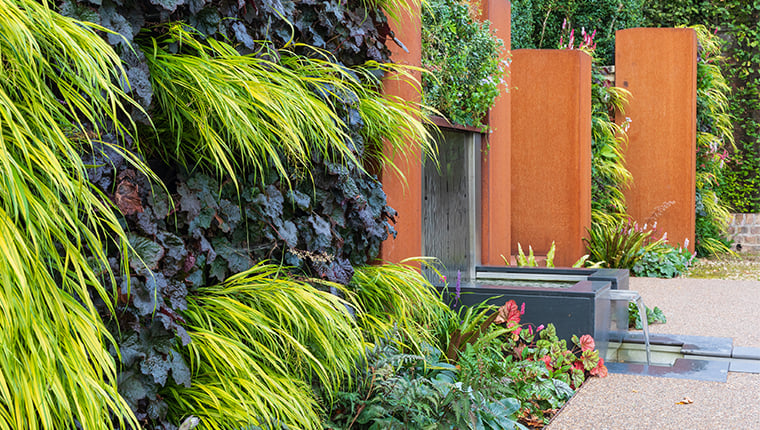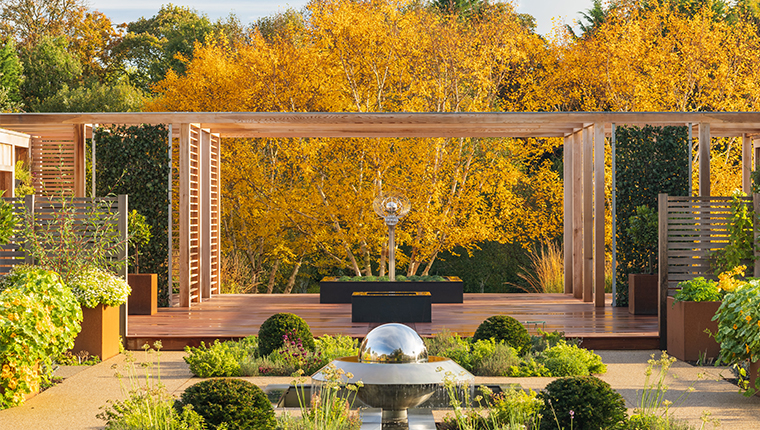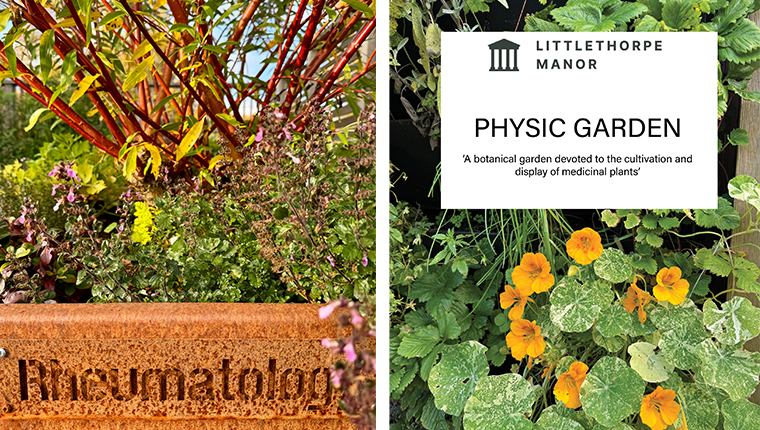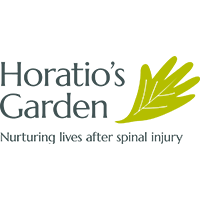Littlethorpe Manor: where medicine meets the magic of horticulture

There is a private garden in Ripon, North Yorkshire that should be on everyone’s garden prescription list. The basic structure of the grounds were laid out when Mr and Mrs Thackray purchased the property in 1985 and the garden, as seen today, has been developed since 1998 with the appointment of Eddie Harland as Head Gardener. From the beautiful formal gardens to the sweeping parkland and newly created Physic Garden, there is a world of history and horticultural to explore. If you’re looking for ‘green medicine’ this is the garden for you…
Created from bare fields over the last 40 years, the eleven acres of garden at Littlethorpe Manor embrace the combined ingenuity, creativity, collaboration and hard work of the owners and head gardener. There’s much of what you might expect from a Georgian Manor’s garden; a walled garden with dwarf box hedging, contemporary herbaceous planting and tumbles of old roses; York stone terracing and a balustrade leading down to a formal lawn, a large fountain pool and beyond, your eye is drawn to the lake, surrounded by extensive beds and graced on the far side by a classical pavilion.
It’s a garden of pure delights and wondrous planting at every turn but what you probably wouldn’t expect to find in a garden like this is a contemporary Physic Garden. Created on the site of the old tennis court it was inspired by the family’s connection to medicine. The late Mr Thackray’s grandfather started a chemist shop on Great George Street in Leeds and the family company Chas.F. Thackray, Leeds (1903-1990) went on to become a world leader in the innovative development of the total hip joint replacement in co-operation with Sir John Charnley. Together they pioneered the development of both the acetabular cup and prosthesis, and over 500,000 hip joints being fitted to patients worldwide to relieve the misery of arthritis and subsequent bone damage. The joint became the world standard in low friction arthroplasty.

The new Physic Garden is laid out around a central stainless steel rill with statuary features representing the Thackray/Charnley hip joint, surrounded by garden areas displaying medicinal plants and describing their uses from the earliest monastic gardens to the present day.
At the head of the rill is a stainless steel water wall, screen printed with stove enamelled images illustrating a selection of the surgical implements manufactured by Chas.F. Thackray. The rill flows under a section of porcelain paving inlaid with the motif of the Low Friction Society and continues through beds planted with herbs and Yew topiary domes to a water feature in the form of the upturned acetabular cup and femoral head of a hip joint.
Water flows from the bowl of the acetabular cup over a wide stainless steel skirt, cascading into a central pool. The femoral head, a heavy stainless steel sphere, floats in the centre of the bowl and conveys the principle of Low Friction Torque, upon which the total hip replacement was designed.
Extending on from the central pool, the rill disappears under a deck at the end on which is a raised bed featuring a large stainless steel sculptural interpretation of a hip joint and finally the water falls into a corten steel pool representing the recycling of materials from where it is pumped back to the water wall.

The story begins with Hildegard’s garden where plants are grown as described by the 11th Century abbess, Hildegard of Bingen in her book ‘Physica’, written between 1150 to 1158. Plants are grown in beds according to the parts of the body and the ailments that they would treat. Two adjacent beds of parasol Lime trees provide balance to the sheltered seating areas at the far end of the garden and also shade for woodland plants used in herbal medicine past and present.
At the centre of the Physic Garden are the contemporary medicinal beds surrounded by slatted screening with amber glass apothecary bottles, referencing the chemist shop on Great George Street in Leeds where Mr Thackray’s grandfather started the family business. Here, the beds are split into 12 categories relating to different medical conditions. They contain plants used in the modern pharmaceutical industry as well as those used in modern herbal medicine. Information boards to guide the visitor through the plants and others to tell the story of the family business and the Thackray/Charnley hip joint are also being planned.
This is a garden with a story to tell, or to simply be enjoyed for its beautiful calm symmetry.
You can visit Littlethorpe Manor when it opens for the National Garden Scheme on Sunday 6 July. For more information click here
The Physic Garden Booklet

The Physic Garden at Littlethorpe Manor is devoted to the cultivation and display of medicinal plants to highlight the positive impact horticulture can have in people’s mental health and wellbeing.
For some people, the alternative way of looking at healthcare may represent an effective solution. For others, this will only be the starting point for a wider exploration of the healing power of herbs.
The small Monastery Garden has been based on a selection of plants utilised by Hildegard of Bingen (1098-1179), German Benedictine abbess. She was a doctor, naturopath, scientist, composer, a visionary and a Saint. Her knowledge of the human body has been an inspiration for the twelve category beds, representing the modern medicine and herbal remedies still valued today as it was 1000 years ago.
For a list of ailments and the herbs that help alleviate them click the link to discover more: Physic Garden booklet
This story was originally published in the 2025 Little Yellow Book of Gardens and Health – to read it click here
Photography: Eddie Harland


















